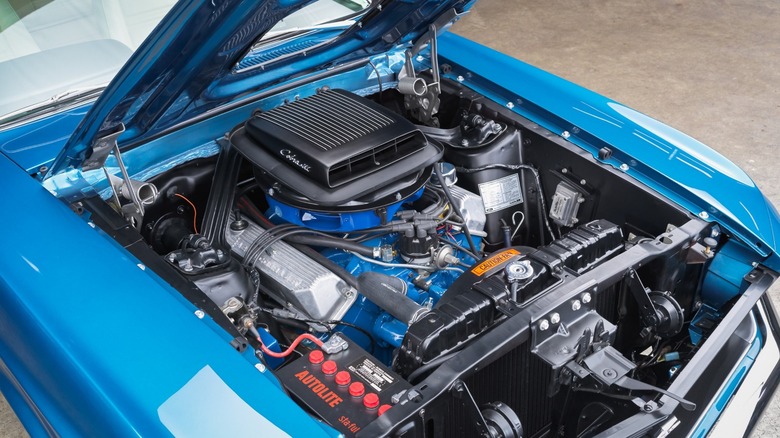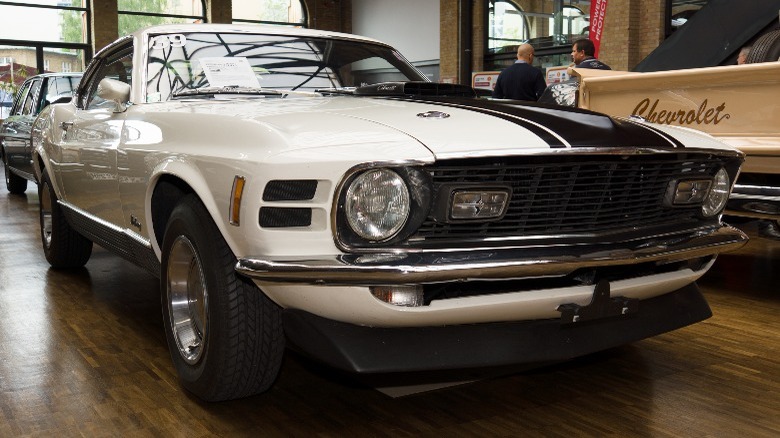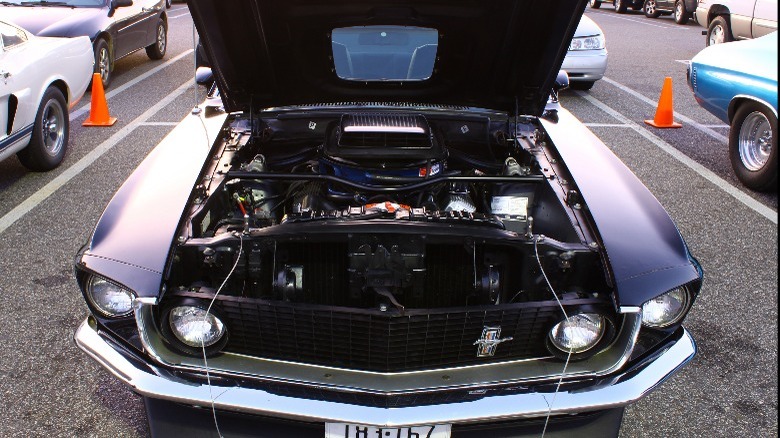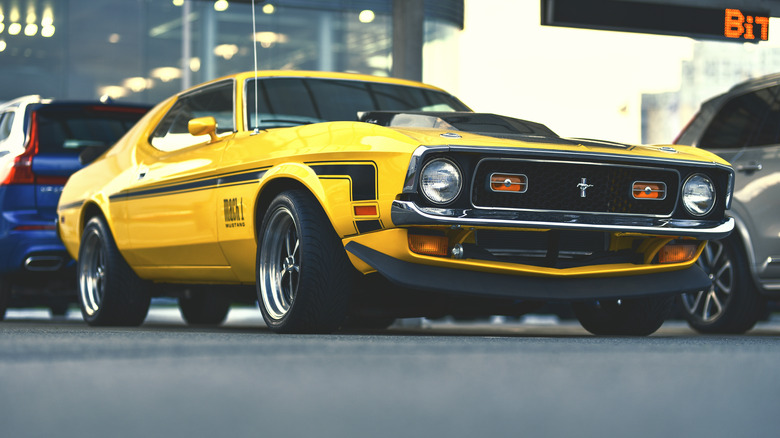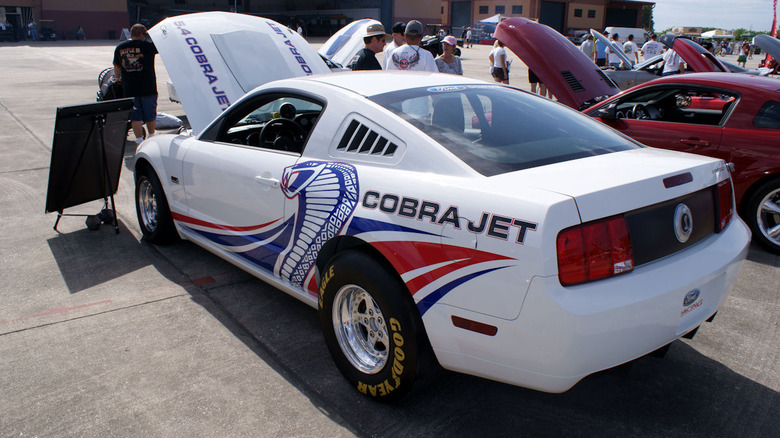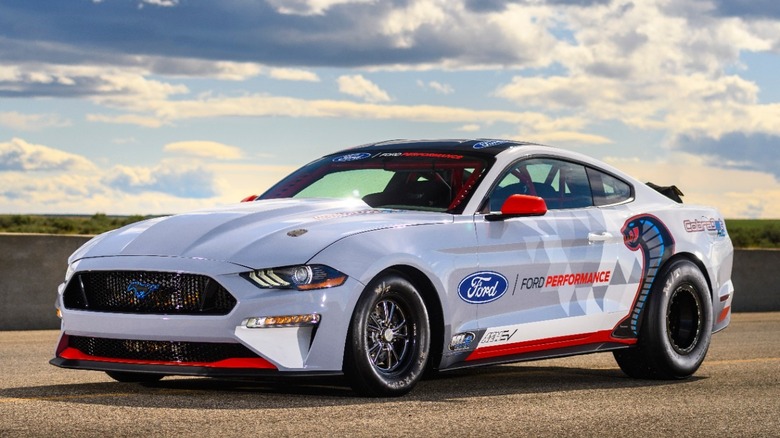How Ford's Cobra Jet Engine Has Evolved Over Its 60-Plus Years
The '60s were the golden age of American muscle cars, and this vibrant automotive scene witnessed the birth of many iconic engines with large displacements and unmatched power outputs. Among these high-performance big block engines was the legendary 1968 Ford Cobra Jet, a revolutionary powertrain put in higher-end trims of the Mustang, Fairlane, and Torino.
Ford's 427 big block had already taken the racing scene by storm before Ford dominated the 1968 NHRA Winternationals with the 428 cubic inch big block powertrain, also known as the Cobra Jet. Impressing many fans and enthusiasts, it instantly became a household name. Ford's Cobra Jet engine was the beating heart that helped the Mustang earn its international reputation as the ultimate American pony car in the late '60s and early '70s.
Although the production line for the original Cobra Jet ended in the '70s, Ford tried to revive the Cobra badge later in modern iterations of the Mustang. To understand what makes this piece of machinery so special, we need to go back to where it all started.
How the Cobra Jet engine came to be
In 1958, Ford introduced the FE powertrain lineup as the successor to the short-lived Y-block engine. The FE engine series was Ford's first attempt at building big block motors for their cars and trucks, although no first-gen model offered anything that reached the 400 cubic inch mark in displacement. However, the second generation of Ford's FE V8 engine came in hot with a 406 cu-in displacement that won NASCAR and NHRA titles in 1962. Ford went even bigger and bolder in 1963 by introducing the 427 model, a V8 that could produce over 420 horsepower. The 427 featured in the Ford GT40 was the engine that won first, second, and third place at the 1966 Le Mans.
While extremely popular, Ford initially didn't put its big block V8s under the Mustang's hood until 1967, when the Shelby Mustang GT500 entered the road with a renewed 428 V8 engine. However, Carroll Shelby wasn't the only one working on getting more power output out of the Mustang. Around the same time, a Ford dealer named Bob Tasca installed a modified 428 V8 in his own Mustang. His modifications significantly increased the low-end torque and HP output of the 428 engine, which caught Ford's attention.
Inspired by Tasca's upgrades, Ford introduced an enhanced version of the 428 V8 engine for the 1968 model year Mustang, dubbing it the Cobra Jet.
Pinnacle of Cobra Jet performance
With its new big block V8 engines, Ford was ruling the streets with its Mustangs, Fairlanes, and Torinos. In 1969, Ford produced an even more performance-oriented powertrain for the Drag Pack option, dubbed the Super Cobra Jet. For insurance and emission regulation purposes, Ford severely underestimated the official output for these motors, rating both the Cobra and Super Cobra at 335 horsepower. However, these motors could produce well over 400 hp on a dyno test.
During the late '60s and early '70s Ford was gradually replacing FE engines with their new powertrain model, the 385 series. To keep the popular Cobra name alive, they made two 429 cubic inch versions of the 385 V8 engine –the Cobra and Super Cobra — for the Thunderbird in 1970. Once again, while all of these engines could produce over 400 hp, the official ratings were reported at around 370 horsepower.
Last of the original Cobra Jet
However, by the early '70s, the oil crisis was getting more serious and emission regulations were getting stricter, which meant that the golden age of gas-guzzling V8s was coming to an end. American auto manufacturers had no choice but to dial down on creating big block engines and move on to smaller, more fuel-efficient cars. Like its rivals, Ford had to discontinue its popular big block V8, the 429 Cobra Jet, after 1971, but that wasn't the end for the original Cobra. Ford tried to keep it alive for a couple more years with a smaller, less powerful 351 cubic inch model.
With 280 horsepower, the 351 Cobra Jet introduced in 1971 was significantly less potent than its predecessor, but Ford was forced to decrease the power output even further. The subsequent iterations of the Cobra Jet made 266 and then 255 HP. A couple of years later, in 1974, Ford pulled the plug on the original Cobra Jet entirely, and a Cobra branded engine wouldn't be seen for another 34 years.
The Cobra Jet's Revival After Three Decades
In 2008, Ford decided to pay tribute to the 1968 Mustang that dominated the SS/E class of NHRA drag racing by bringing back the Cobra Jet badge to life once again. The 2008 Cobra Jet was Ford's attempt at creating a dragster Mustang with a powertrain based on the production model. However, the 2008 Cobra Jet was not a street-legal vehicle, and only 50 were made.
Ford armed the 2008 Cobra Jet Mustang with a supercharged version of its 5.4L modular V8 that boasted 425 hp. The powertrain proved worthy of the Cobra Jet badge by finishing the quarter mile in 9.57, setting the record in the SS/G class. Other iterations carrying modified 5.4L V8s rolled out of Ford's factory in 2010 and 2012, while 2014 and 2016 Cobra Jet Mustangs featured a modified version of Ford's 5.0L V8 Coyote engine.
Celebrating the 50th anniversary of the original Cobra Jet, Ford revealed the 2018 Cobra Jet Mustang with a 5.2L supercharged V8 under its hood. Though there are no official ratings, Car and Driver speculated that it should pack something close to 1,000 horsepower.
The Cobra Jet goes electric
To shock the drag racing scene even further, Ford introduced the 2020 Mustang Cobra Jet 1400 as its new competitor for the quarter-mile track. This time, instead of using a V8, Ford went all electric. According to Ford's official ratings, the electric motor in the Cobra Jet boasts 1,400 horsepower and produces 1,100 lb-ft of torque, allowing the car to reach the dragstrip's finish line in under eight seconds while going over 170 mph.
In April 2023, Ford announced that they're working on an all-electric Mustang Super Cobra Jet 1800 that targets several new NHRA world records for electric vehicles. As the name suggests, the Super Cobra Jet 1800 prototype packs 1,800 horsepower, 400 more than the previous model. Moreover, Ford has made other significant improvements to the car, including the removal of hundreds of pounds of weight. With this new configuration, the new Super Cobra 1800 might be capable of finishing the quarter-mile run in somewhere close to 7 seconds.
